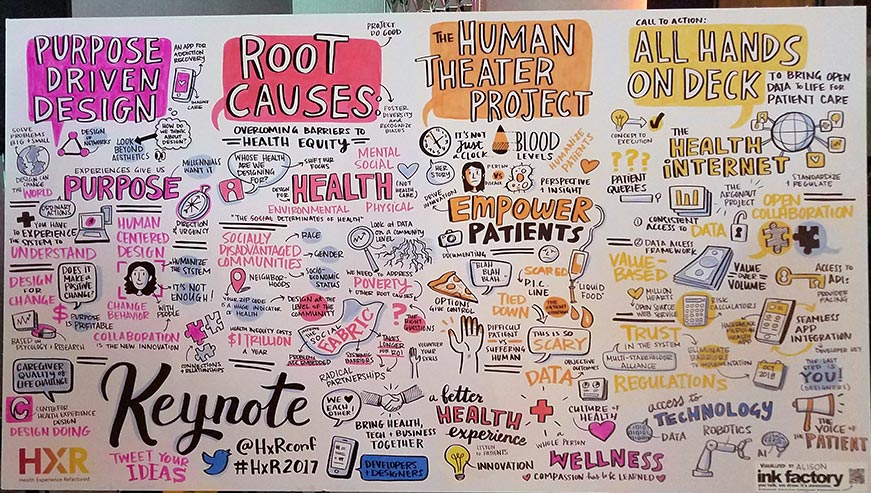Purpose Driven Design, Health Equity, and Bring Open Data to Life
July 22, 2017
Health Experience Refactored (HxRefactored) is a revolutionary conference co-hosted by health innovation event planner Health 2.0 and design agency Mad*Pow. This year’s conference gathered more than 600 cross-disciplinary thinkers and professionals to discuss how to improve healthcare through better patient-centered design. HxRefactored applies design, science, evidence, and theory to re-imagine the entire health journey and to find new ways to actually deliver that vision.
There was much to learn for anyone working at the intersection of technology, design, and medicine. Below are some of the key takeaways for healthcare professionals:

1. Purpose driven design
Amy Cueva, Founder and CEO of Mad*Pow started off the keynotes with purpose driven design. While human centered designed is important in healthcare, it alone is not enough to achieve better patient outcomes. Amy believes we must move beyond the looks. In a world where design is driven by purpose, it can deliver positive change and help people look at things in new ways. By understanding people’s emotions, behavior and what emotions drives them, we can understand how to create an interface for them to solve problems they face. How – design with the understanding of the behavior then design to change the behaviors that matter.
2. Overcoming barriers to health equity
Up next was Olga Elizarova and Samantha Depsey from Mad*Pow presenting on the barriers to health inequities. Olga and Samantha believes healthcare solutions serving patients should be designed from a point of view that is neither too broad (i.e. the state or city) nor too narrow (i.e. the individual). Instead, healthcare design should be at the level of the community and take into account the health inequalities that exist at the community level, such as poverty, education, and violence. Olga and Samantha identified that the challenges in the way of designing with health equality in mind include a lack of financial incentives in fee-for-service payment models, long term ROI cycles that are not attractive to investment, and gaps in knowledge about when, where, and how best to implement these types of programs.
3. Call to Action: All Hands on Deck to Bring Open Data to Life for Patient Care
Aneesh Chopra followed with a call to action to bring open data to life for patient care. While there has been a significant effort around solutions that benefit patients, Aneesh stressed the importance of innovations which also enhance the capability of the provider. Two case studies in the Million Hearts program and Hackensack Meridian Health emphasized his point. The Million Hearts program, which is now in a payment trial, has already shown great opportunities to improve patient heart health through provider incentives. However, providers currently use a risk calculator, which can be downloaded to a mobile phone, to determine a patient’s ability to participate and derive value from the program. While current policy creates incentives to facilitate integrations that support the patient, an integration in this use case would make participation even easier for the provider. At Hackensack, hospital leadership invested in building mobile connected technologies on top of existing technology systems. Since Hackensack built the new technology themselves, the result is a successful model for how provider networks can make it easy for internal and external technologies to be used to engage both patients and providers, despite the fact that current regulations only focus on the patient.
